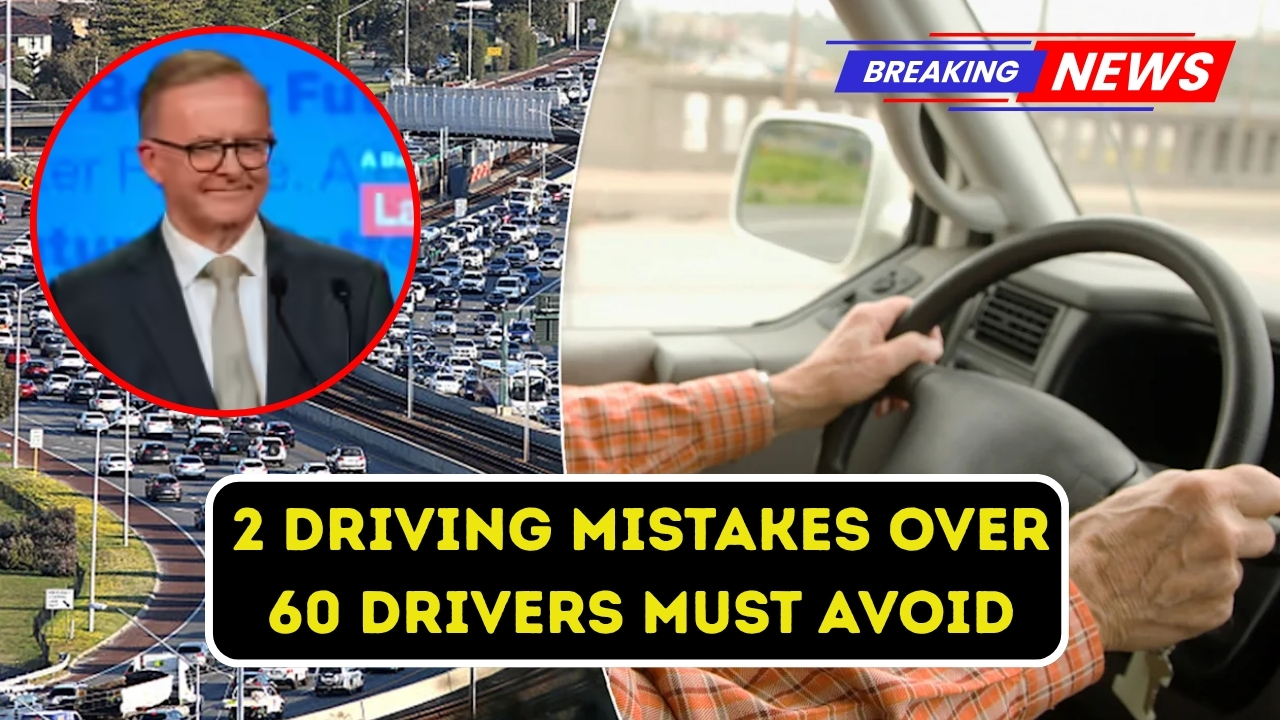When it comes to driving in Australia, age doesn’t necessarily dictate your ability to stay safe on the roads. Many seniors are excellent drivers—calm, patient, and far less prone to risky maneuvers than younger drivers. However, with age comes a few natural changes that can affect driving: slower reaction times, reduced eyesight, and sometimes, overconfidence from decades behind the wheel. And here’s the kicker—Australian traffic authorities are now pointing out two specific driving mistakes that drivers over 60 must avoid at all costs. These mistakes are surprisingly common and, to be fair, often underestimated.
Let’s unpack what these mistakes are, why they matter, and how over-60 drivers can keep themselves—and everyone else—safe.
Mistake 1: Misjudging Gaps at Intersections
One of the most frequent errors seniors make is misjudging gaps in traffic, especially when pulling out of side streets or turning across busy roads. Now, this doesn’t mean older drivers are reckless. Quite the opposite—they often wait longer, hesitate more, and second-guess themselves. But that hesitation can be just as dangerous as rushing.
Imagine this: you’re at an intersection, you see an oncoming car in the distance, and you think you have enough time to cross. You start moving, but halfway across, you realise the car is approaching faster than expected. Suddenly, what seemed like a safe move becomes risky. This split-second miscalculation is one of the top causes of accidents involving older drivers.
Why does it happen? A few reasons:
-
Reduced depth perception: With age, eyes naturally take longer to adjust focus, making it harder to judge distance accurately.
-
Slower reaction time: Even a one-second delay in decision-making can make a big difference at 60km/h.
-
Overconfidence: Some senior drivers rely on “driving experience” rather than adapting to faster, busier roads today.
The fix? Be deliberate but not hesitant. If in doubt, wait. Use roundabouts or traffic lights instead of risky right turns when possible. And honestly, a few extra minutes on the road are far better than taking a dangerous gamble.
Mistake 2: Failing to Check Blind Spots Properly
The second major mistake is not checking blind spots thoroughly. Many drivers over 60 assume mirrors are enough. To be fair, mirrors cover a lot—but they don’t cover everything. Changing lanes without a proper head check is one of the riskiest moves any driver can make.
Why is this mistake especially common for older drivers? Well, stiffness in the neck or shoulders can make turning around more difficult. Plus, some seniors rely on decades of habit, thinking, “I’ve never had a crash, so I must be fine.” But the reality is, modern cars, with their thicker pillars and smaller windows, have bigger blind spots than the cars of the 1980s or 1990s.
The dangers are clear:
-
Motorbikes, cyclists, or even small cars can disappear completely from your side mirrors.
-
A simple lane change can escalate into a side-swipe accident in seconds.
-
Not checking properly increases risks especially on highways, where traffic moves fast.
How to avoid it? Make it a rule: mirrors first, then a full shoulder check before changing lanes. If mobility is an issue, consider installing blind spot mirrors or upgrading to a car with lane-change assist technology. These little aids aren’t about admitting weakness—they’re about staying smart and safe.
Why These Mistakes Matter More Than Ever
To be completely honest, Australian roads are more crowded now than they were decades ago. Traffic is faster, cars are more powerful, and distractions like phones are everywhere. Even small mistakes can have big consequences. Authorities aren’t singling out senior drivers to pick on them—they’re highlighting these issues because statistics show patterns.
For example, a recent road safety report found that while drivers over 60 are less likely to engage in reckless speeding or drunk driving, they are more likely to be involved in collisions caused by misjudgment or failure to check blind spots. It’s not about capability—it’s about awareness and adaptation.
Practical Tips for Over-60 Drivers
-
Get regular eye checks: Clear vision means better judgment.
-
Stay flexible: Gentle stretching can improve mobility for those essential head checks.
-
Avoid peak-hour madness: If you can, drive during quieter times of the day.
-
Update your habits: Modern cars require modern driving techniques.
Driving is independence. Nobody wants to give that up. But small adjustments can make sure you keep that independence for longer—safely.
Quick Reference Table
| Driving Mistake | Why It Happens | How to Avoid It |
|---|---|---|
| Misjudging gaps at junctions | Slower reaction times, depth issues | Take extra time, use signals, avoid rushing |
| Skipping blind spot checks | Mobility issues, overreliance on mirrors | Shoulder checks, blind spot mirrors, tech aids |
To wrap this up, let’s be clear: most drivers over 60 are careful, considerate, and experienced. But even the best drivers can slip into habits that don’t quite fit today’s traffic environment. The two mistakes—misjudging gaps and failing to check blind spots—aren’t just “small oversights.” They’re potential accident triggers.
So, if you’re over 60 (or if you know someone who is), take this as a friendly reminder. Adjust, adapt, and stay alert. After all, safe driving isn’t just about protecting yourself—it’s about protecting everyone else on the road too.
FAQs
1. Why are over-60 drivers being targeted in road safety campaigns?
Because data shows specific mistakes, not because of bias.
2. Are older drivers more dangerous than younger drivers?
Not really—young drivers speed more, while seniors make judgment errors.
3. Can blind spot monitors replace shoulder checks?
They help, but nothing replaces a proper head turn.
4. Should seniors avoid driving altogether?
No—just adapt habits, stay cautious, and drive when conditions are easier.
5. How often should older drivers get their vision tested?
Ideally every 1–2 years, or sooner if they notice changes.




